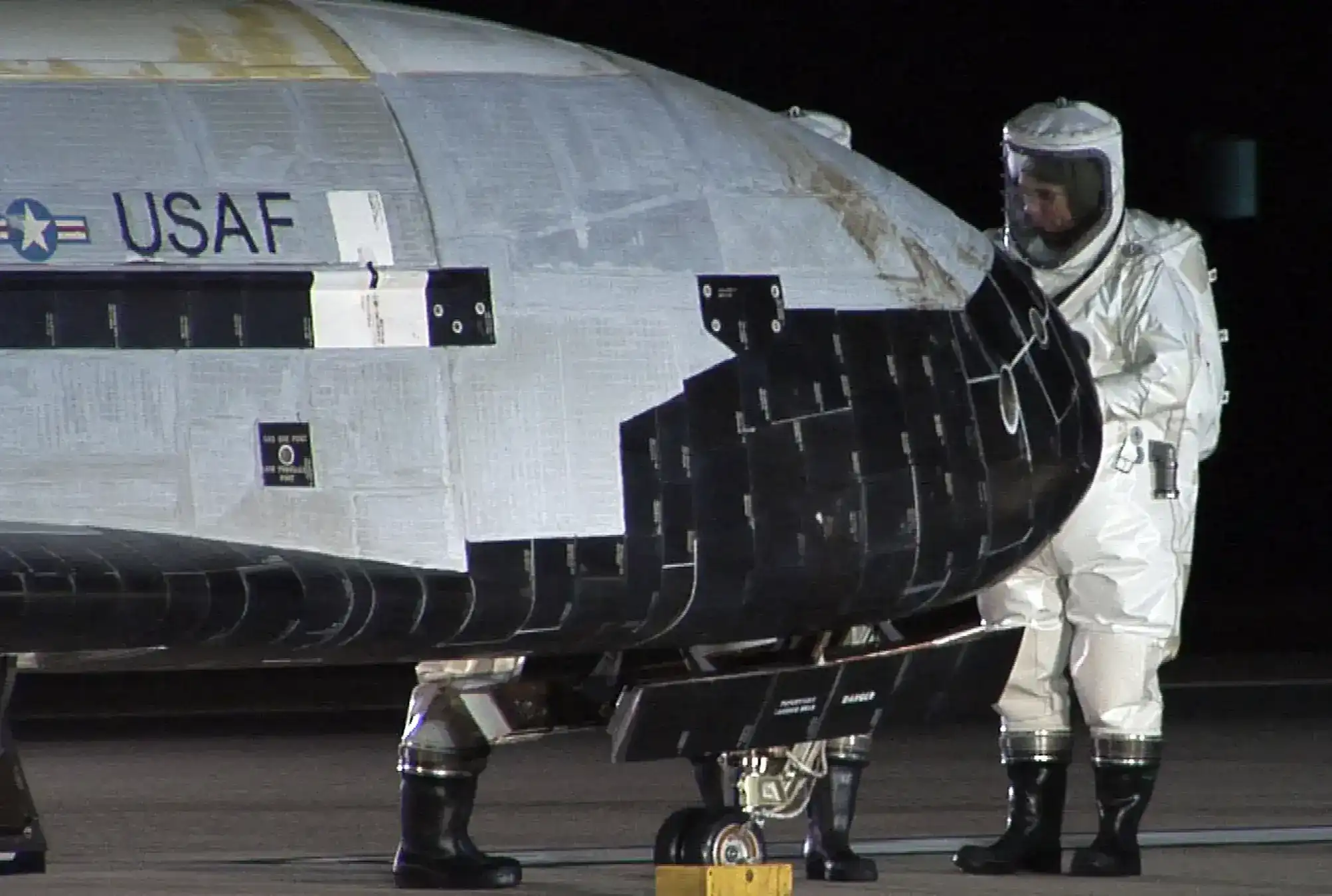The latest deployment of the X-37B military spaceplane embarked on its seventh mission, represents a significant milestone as it soared into space atop a SpaceX Falcon Heavy rocket.

This marked the initial use of the Falcon Heavy, renowned for its capacity to propel payloads to higher orbits compared to previous launch systems.
The Falcon Heavy, consisting of three rocket cores, took off from NASA’s Kennedy Space Center in Cape Canaveral, amidst a breathtaking nighttime spectacle broadcasted live by SpaceX. However, this successful liftoff followed multiple delays over two weeks due to adverse weather conditions and undisclosed technical glitches, necessitating the spacecraft’s return to its hangar before the eventual launch.
Interestingly, this event occurred in the wake of China’s Shenlong spaceplane’s third mission since 2020, showcasing a compelling dimension to the escalating U.S.-China rivalry in space exploration.
Operating under the U.S. Space Force’s National Security Space Launch program, the X-37B military spaceplane, developed by Boeing, resembles a miniature space shuttle and serves to deploy diverse payloads and conduct prolonged technological experiments during its orbital flights. Upon completion of its mission, the craft re-enters the Earth’s atmosphere to land akin to an airplane on a runway.
Having undertaken six previous missions, predominantly launched via Atlas V rockets by the United Launch Alliance, this recent endeavor utilized SpaceX’s Falcon 9 booster in May 2020. Notably, this mission inaugurated the deployment of the X-37B via the more robust Falcon Heavy, capable of transporting heavier payloads to greater distances, potentially reaching geosynchronous orbit at over 22,000 miles above Earth.
Previously limited to low-Earth orbit, below 1,200 miles, the X-37B’s newfound capability could explore “new orbital regimes” according to the Air Force Rapid Capabilities Office. Speculations abound regarding the military spaceplane trajectory, with conjectures suggesting highly elliptical orbits encompassing the moon’s vicinity, an area of increasing interest for the Pentagon.
Amidst its undisclosed mission objectives, the X-37B carries a NASA experiment examining the effects of extended radiation exposure on plant seeds, pivotal for future space missions’ food sustainability to the moon and Mars.
The simultaneous launch of China’s Shenlong, albeit employing a less potent Long March 2F rocket, adds depth to the competitive landscape. General B. Chance Saltzman of the Space Force hinted at the competitive aspect, noting the significance of both countries’ endeavors in orbit and their temporal alignment.
While the mission’s duration remains undisclosed, past trends indicate progressively longer flights, with the previous mission lasting well over two years before its return landing in November 2022. This recent venture, with its enhanced capabilities and undisclosed trajectory, signifies a pivotal leap in space exploration and potential advancements in various domains, from national security to scientific research.







